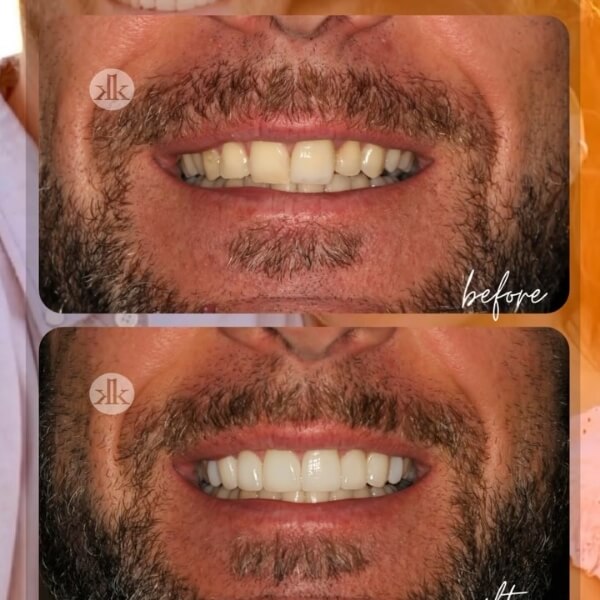
Dental Bridges in San Diego, CA
The goal of most people is to maintain their smiles for their entire lifetime. Unfortunately, accidents, injuries, trauma, and poor oral hygiene can lead to one or more teeth being lost. If you lose a tooth, it is important to find a restorative treatment option as soon as possible. Replacing your missing teeth quickly can help ensure that your remaining teeth stay intact. Shifting teeth can affect your bite, which can adversely impact your chewing, smiling, and speech.
Several options are available for smile restoration. The particular tooth or teeth that have been lost, as well as your timeframe, budget, and cosmetic goals all contribute to which approach can benefit you the most.
What Is A Dental Bridge?
Dental bridges are an excellent choice to replace one or more missing teeth and keep your bite position in line. Based on the particular characteristics you exhibit, you may find that a dental bridge can provide the restorative method you need.
In general, a dental bridge is a permanent dental reparative process used to replace one or more missing teeth with a dental prosthetic. An artificial tooth is definitively joined to the adjacent teeth or dental implants for a natural smile and bite with the same function as authentic teeth.
Bridges are usually composed of porcelain bonded to precious or non-precious metal or durable ceramic material.
“At our practice, we do not cut corners. We only use the most advanced, cutting-edge equipment available.”rn— Dr. Kohani
How It Works
What Is The Dental Bridge Process?
Consultation
During your consultation, Dr. Kohani will educate you about the different treatment methods available for restoring missing teeth. This process allows you to choose which process will work best for you. An examination is necessary to gain a better idea of what your dentition can specifically benefit from.
Traditional Fixed Bridges
Traditional fixed bridges are the most popular type of bridge. The two or more teeth adjacent to a gap are covered by a ceramic dental crown, or abutment, and a false tooth, or pontic, is placed in between them to fill the open space. Bridges can include one or more prosthetic teeth depending on the patient’s needs.
These bridges are designed to utilize the natural teeth on each side of the gap. The outside teeth are prepared, usually by removing some of the outer layers, to make room to fit a crown over them. These crowns are the anchor that is used to support your bridge in place and are cemented in.
A temporary bridge is worn until the dental lab completes the final bridge.
Implant-supported Bridges
When traditional bridges are not possible, implant-supported bridges are another technique for replacing missing teeth. Rather than using a crown for support, implant-supported bridges add dental implants to provide an anchor for the bridges.
One implant is typically installed for every missing tooth. When this approach is not possible, the false tooth can be supported by two implant-supported crowns.
Two procedures are necessary for implant-supported bridges. The initial appointment implants the material into the jaw, and then there is a waiting period for the bone to fuse with the implants. The next step is to place the bridge. Although this process may take longer than traditional bridges, it offers a viable option for patients who need implants to support their bridge.
Final Adjustments
Once the bridge has been finished, patients are invited back to test how it fits. After making any necessary adjustments for secure and comfortable placement, everything is attached and cemented. The new bridges are stained to match the color of your teeth for an aesthetically pleasing result.
Testimonials
Our patients LOVE us, and you will too!
I have gone to Dr. Kohani a few times now and have had nothing but great experiences. I was impressed with the friendly staff that is welcoming and organized. We all know these visits aren’t necessarily ones we look forward to, but Dr. Kohani makes this experience quite pleasant. He’s a very nice man and phenomenal dentist. I will definitely be returning!
He is an extremely dedicated dentist who is committed to his patients. Dr. Kohani is warm, caring and understanding. I have referred my family and friends to him, who also think he is an amazing dentist and passionate about his practice. You can feel confident with Dr. Kohani and know he will give you the best results possible.
Definitely the BEST dentist I have ever had! A friend referred me to Dr. Kohani. In the past I have not had good experiences with other dentists. As soon as I met Dr. Kohani, I felt very comfortable. He is a very knowledgeable and caring doctor and his staff is amazing. I am currently doing Invisalign with Dr. Kohani. Every time I go to his office it is a very pleasant experience. Dr. Kohani and his staff are always so warm and welcoming. If you are looking for a good, caring, and honest dentist I recommend Dr. Kohani!
Dental Bridges FAQ
Am I A Good Candidate For Dental Bridges?
Scheduling an appointment with Dr. Kohani can help you determine whether a bridge is right for you. Some patients prefer dental implants or a partial denture, depending on their situation.
Dental bridges are recommended for patients who have been missing one or more teeth for an extended period of time. Bridges are also beneficial when placed between teeth that need fillings or crowns. These abutment teeth already require prepping, so setting a bridge can help enhance the surrounding teeth.
How Long Do Dental Bridges Last?
Dental bridges are designed to be a strong, natural-looking, long-lasting solution to replacing missing teeth. With proper oral hygiene, you can significantly prolong the life of your dental bridges. Dr. Kohani will discuss the best care for dental bridges during your visit.
How Much Do Dental Bridges Cost?
Many factors contribute to the cost of dental bridges, including the size, number of teeth being replaced, and material or type of bridge. Dental insurance policies can help cover some of the cost, so contact your insurance provider to discuss what your plan entails.
How Do I Take Care Of My Bridge?
Similar to your natural teeth, your bridge will need to be cleaned every day. Brushing, flossing, and using specialized tools to clean under your prosthetic is vital to prevent gum disease.
Can I Have A Bridge Fitted Immediately After A Tooth Extraction?
It takes time for your gums to heal properly. Temporary dentures may be used while you wait for your bridge to be completed. Everyone heals at a different rate, but it can take up to six months for your gums to be ready for bridges.
Patient Portal Login













